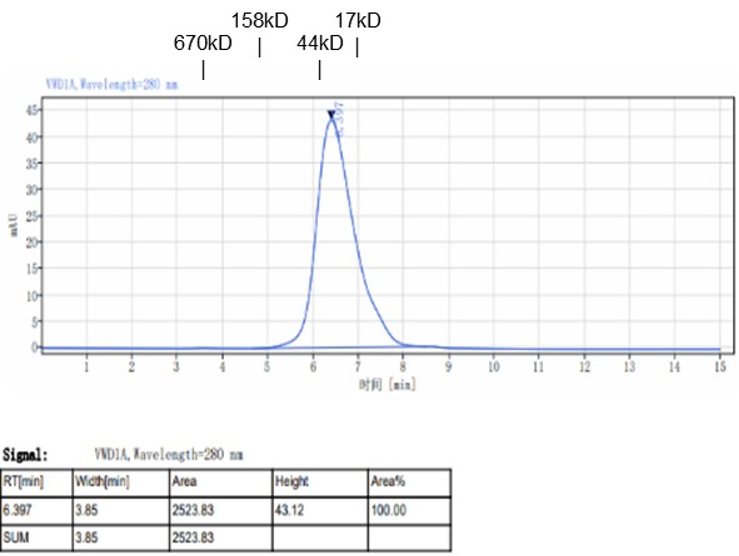hIL13(33-146)-His
Description
Interleukin-13 (IL13) is a cytokine that plays a key role in the pathogenesis of allergy, cancer and tissue fibrosis. It is secreted by several helper T cell subsets (especially Th2), NK cells, mast cells, eosinophils, basophils and visceral smooth muscle cells. IL13 suppresses the production of proinflammatory cytokines and other cytotoxic substances by macrophages, fibroblasts, and endothelial cells. It synergizes with IL2 to regulate IFNg synthesis. IL13 stimulates B-cell proliferation as well as the activation of eosinophils, basophils, and mast cells. It promotes immunoglobulin class switching to IgE and upregulates CD23/Fc epsilon RII expression. Additionally, IL13 plays an important role in modulating the production of transmembrane and soluble forms of IL1RL1 to control IL33 activity. Furthermore, it exhibits the ability to antagonize Th1-driven proinflammatory immune responses while downregulating the synthesis of many proinflammatory cytokines including IL1, IL6, IL8, IL10, IL12 and TNFa through partial suppression of NF-kappa-B signaling pathway. IL13 functions also on nonhematopoietic cells, such as endothelial cells where it induces VCAM1, which is crucial for eosinophils recruitment. It exerts its biological effects through binding to its receptors composed of both IL4R chain and IL13RA1 chain, leading to JAK1 and TYK2 activation, followed by the activation of STAT6. Targeted deletion of IL13 in mice resulted in impaired Th2 cell development, and indicated its indispensable role in the expulsion of gastrointestinal parasites. Blocking of IL13 activity inhibits the pathophysiology of asthma. It induces matrix metalloproteinases (MMPs) as part of a protective mechanism against excessive allergic inflammation that predisposes to asphyxiation.
Product name | hIL13(33-146)-His |
Species | Homo sapiens |
Expression system | HEK293 |
Buffer | PBS, pH 7.4 |
Delivery condition | Dry ice (-80°C) |
Delivery Time | 1 week if in stock; 4 weeks if production needed |
Storage condition | Store at -80°C |
Brand | BioMetas |
Applications | AIDS/HIV, Allergy Research, Cancer Research, Immune Checkpoint, Immune System, Immunotherapy, Inflammation Research, Stem Cells & Differentiation, Targeted Therapy |
Aliases/Synonyms | IL-13, NC30, ALRH, BHR1, MGC116786, MGC116788, MGC116789, P600 |
Reference | |
Note | For research use only. Not suitable for clinical or therapeutic use. |
Size | 1mg, 5mg, 10mg, 50mg, 100mg |
Brand | BioMetas |
Product type | Cytokine |
Expression system | HEK293 |
Applications | AIDS/HIV, Allergy Research, Cancer Research, Immune Checkpoint, Immune System, Immunotherapy, Inflammation Research, Stem Cells & Differentiation, Targeted Therapy |
Contact Us for a Quote!
Data Gallery
Fig. 1.) 4-20% SDS-PAGE analysis
Recombinant protein was visualized by Coomassie Brilliant Blue R250 staining.

Fig. 2.) SEC-HPLC analysis
Column: Superdex 200 Increase 5/150 GL
Running buffer: 2xPBS, pH 7.4
